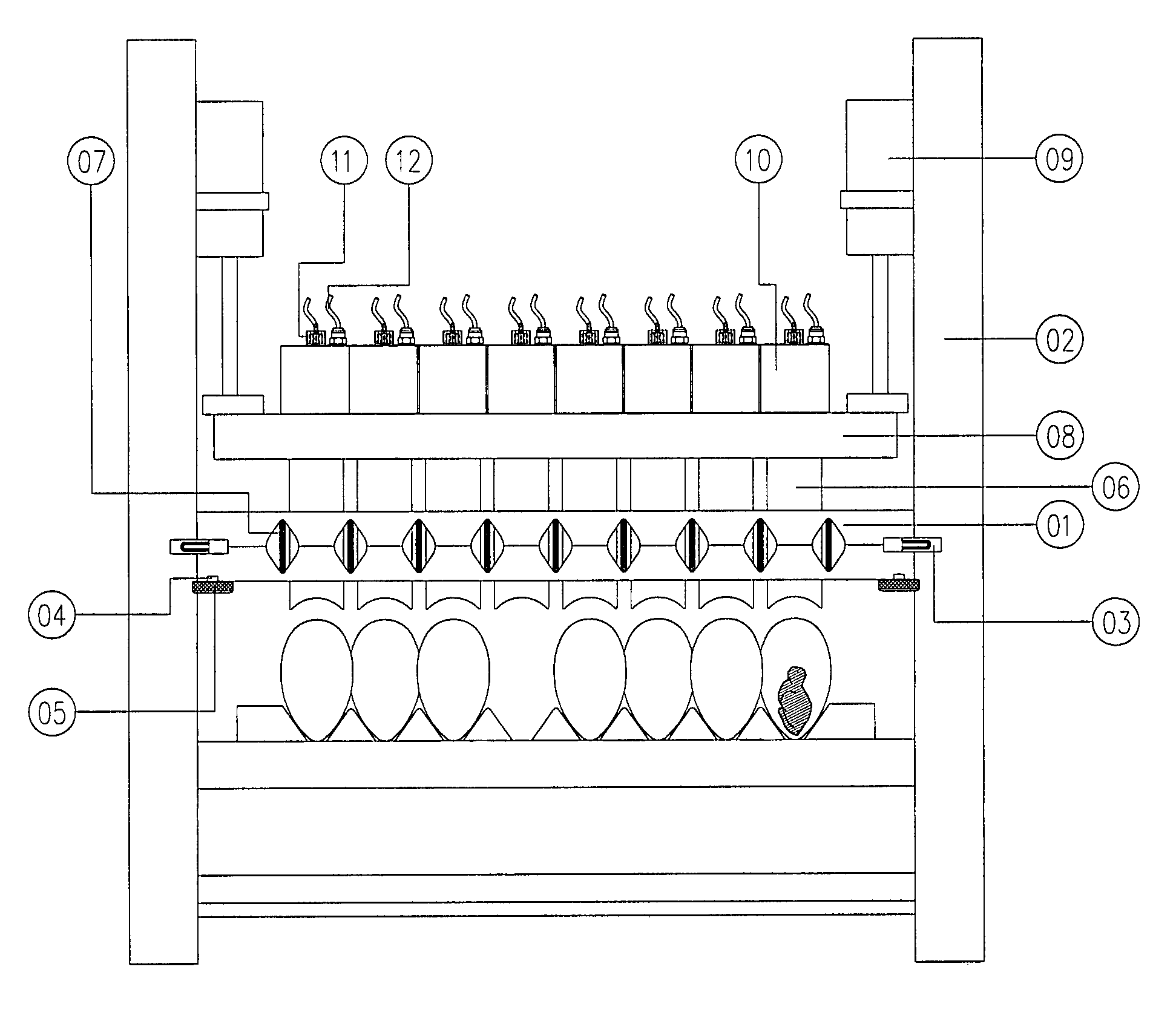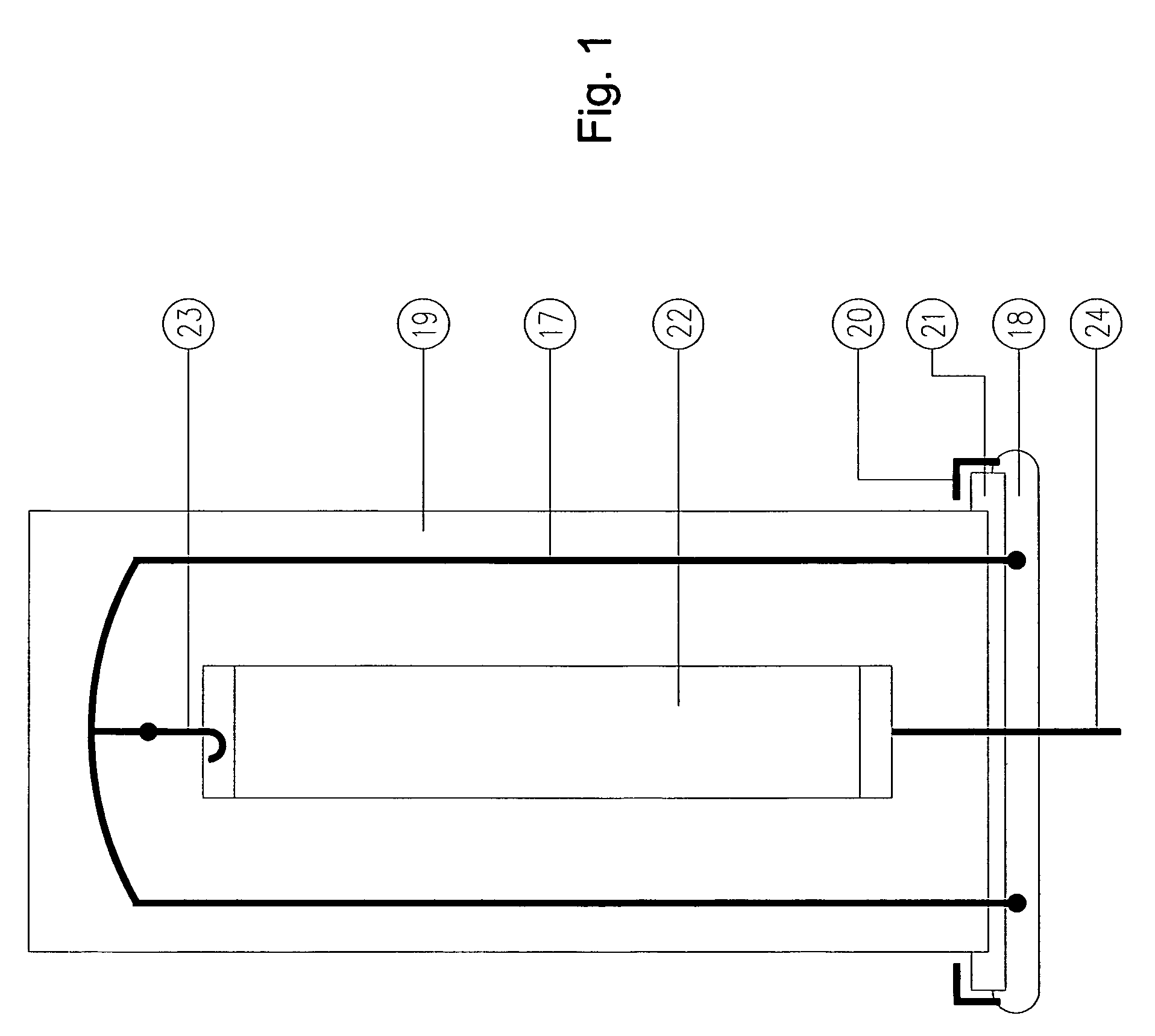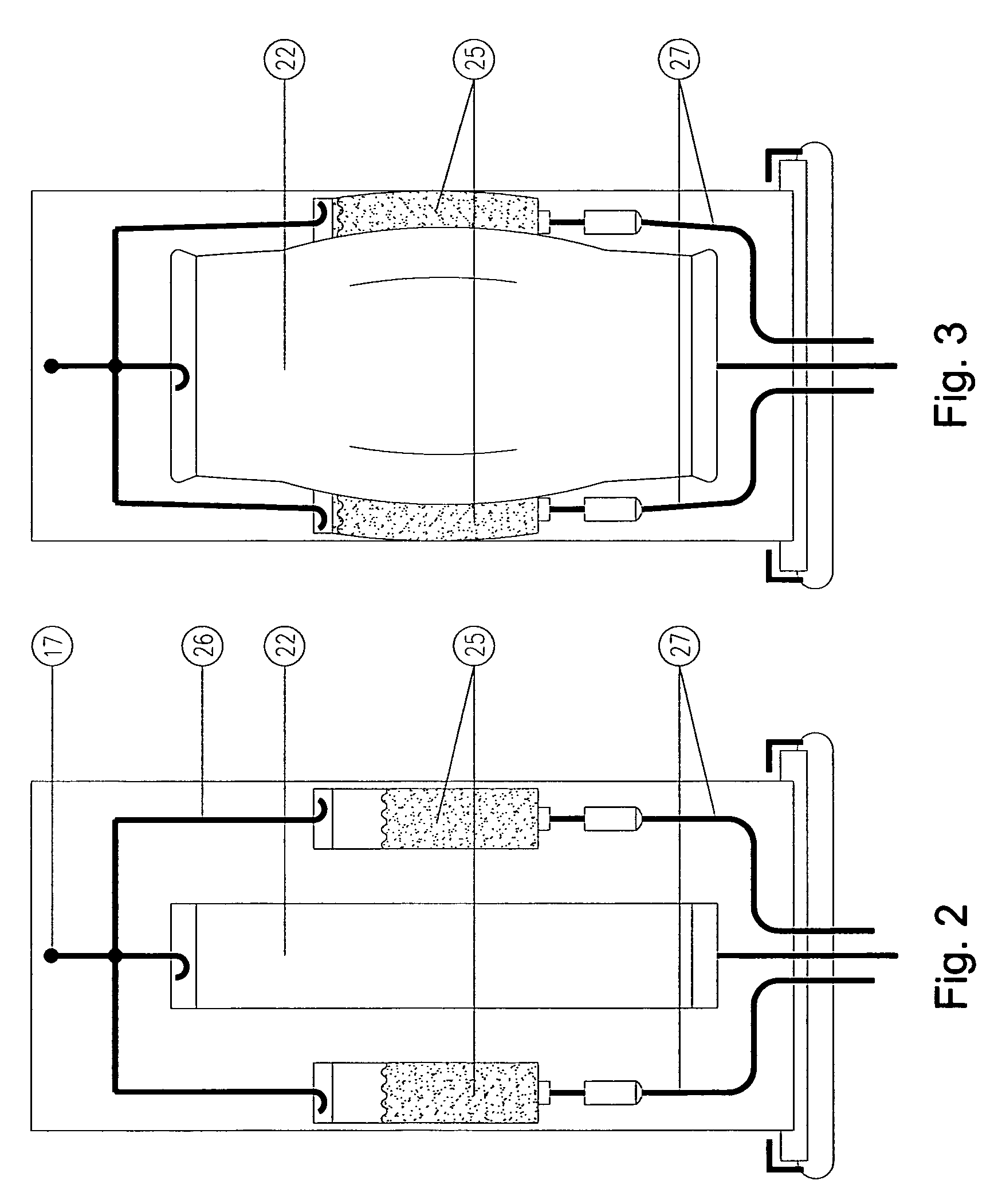Egg vaccination apparatus
a technology of egg and ovule, which is applied in the field of egg vaccination apparatus, can solve the problems of injuring operators, damage to vaccine cells, and pressure within the air bladder, and achieve the effect of rapid and uniform inflation
- Summary
- Abstract
- Description
- Claims
- Application Information
AI Technical Summary
Benefits of technology
Problems solved by technology
Method used
Image
Examples
Embodiment Construction
[0035]With reference now to FIGS. 1-9, detailed explanations of the preferred embodiment of the present invention will be given. The purpose of the drawings is to further the explanation of the preferred embodiment, without limiting the scope of the invention as claimed herein.
[0036]FIG. 1 shows the vaccine chamber before beginning the vaccination process with the “U” support 17 affixed to the aluminum base of the chamber 18 and the acrylic top 19 filled over the “U” support with quick connect fasteners 20 fitting over the lip of the chamber 21 and the air bag 22 suspended from one of the three “U” support hooks 23. The air bag feed line 24 passes through the base of the chamber.
[0037]FIG. 2 shows the vaccine chamber rotated 90° to show the two full vaccine bags 25 before the vaccination process begins, suspended from hooks 26 attached to the “U” structure 17 and with vaccine tubing 27 which is connected to the vaccination system. The air bag 22 is deflated.
[0038]FIG. 3 shows the va...
PUM
 Login to View More
Login to View More Abstract
Description
Claims
Application Information
 Login to View More
Login to View More - R&D
- Intellectual Property
- Life Sciences
- Materials
- Tech Scout
- Unparalleled Data Quality
- Higher Quality Content
- 60% Fewer Hallucinations
Browse by: Latest US Patents, China's latest patents, Technical Efficacy Thesaurus, Application Domain, Technology Topic, Popular Technical Reports.
© 2025 PatSnap. All rights reserved.Legal|Privacy policy|Modern Slavery Act Transparency Statement|Sitemap|About US| Contact US: help@patsnap.com



